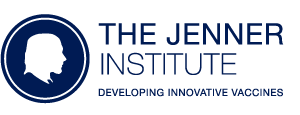Non-typhoidal Salmonella combination vaccines: clinical development plan and regulatory considerations.
Excler J-L., Saluja T., Wilder-Smith A., Kaminski RW., MacLennan CA., Cavaleri M., Kim JH.
Invasive non-typhoidal serovars of Salmonella enterica,S. Typhimurium and S. Enteritidis, (iNTS) are estimated to cause over 500,000 cases of disease leading to more than 79,000 deaths with a high case fatality ratio of 14.5 %. Most infections occur in infants and young children in LMICs in sub-Saharan Africa where host risk factors for iNTS disease such as malaria, malnutrition, HIV infection, and anemia are common. iNTS disease is observed from birth, with a peak incidence early in the second year of life, declining before the age of 3 years. The prevalence of multiple drug resistance of iNTS has increased markedly by decade, emphasizing the need for effective vaccines. A clinical development plan and regulatory pathway for licensure of iNTS vaccines has been shaped following the development of Preferred Product Characteristics and R&D Roadmap through a series of expert consultations. Several iNTS alone or combined with Typhoid Conjugate Vaccine platforms are in early clinical development. Encouraging safety and immunogenicity data have prompted developers and manufacturers to plan efficacy trials, aligned with regulatory expectations. It is critical to clearly communicate iNTS disease burden in endemic countries and to discuss complexities related to iNTS single component or combination vaccine clinical development with regulators. An essential component is the disease burden in infants less than 6 months of age, which will inform the optimal age of first vaccination (less than or from 6 months), compatibility across national expanded programme on immunization schedules, and whether a booster dose would be needed. Early regulatory guidance is essential to make informed regulatory decisions and to guide the clinical development plan and licensure pathway. Continued communication with public health stakeholders and end-user representatives will effectively contribute to better awareness and education about iNTS disease and protection afforded by vaccination.

